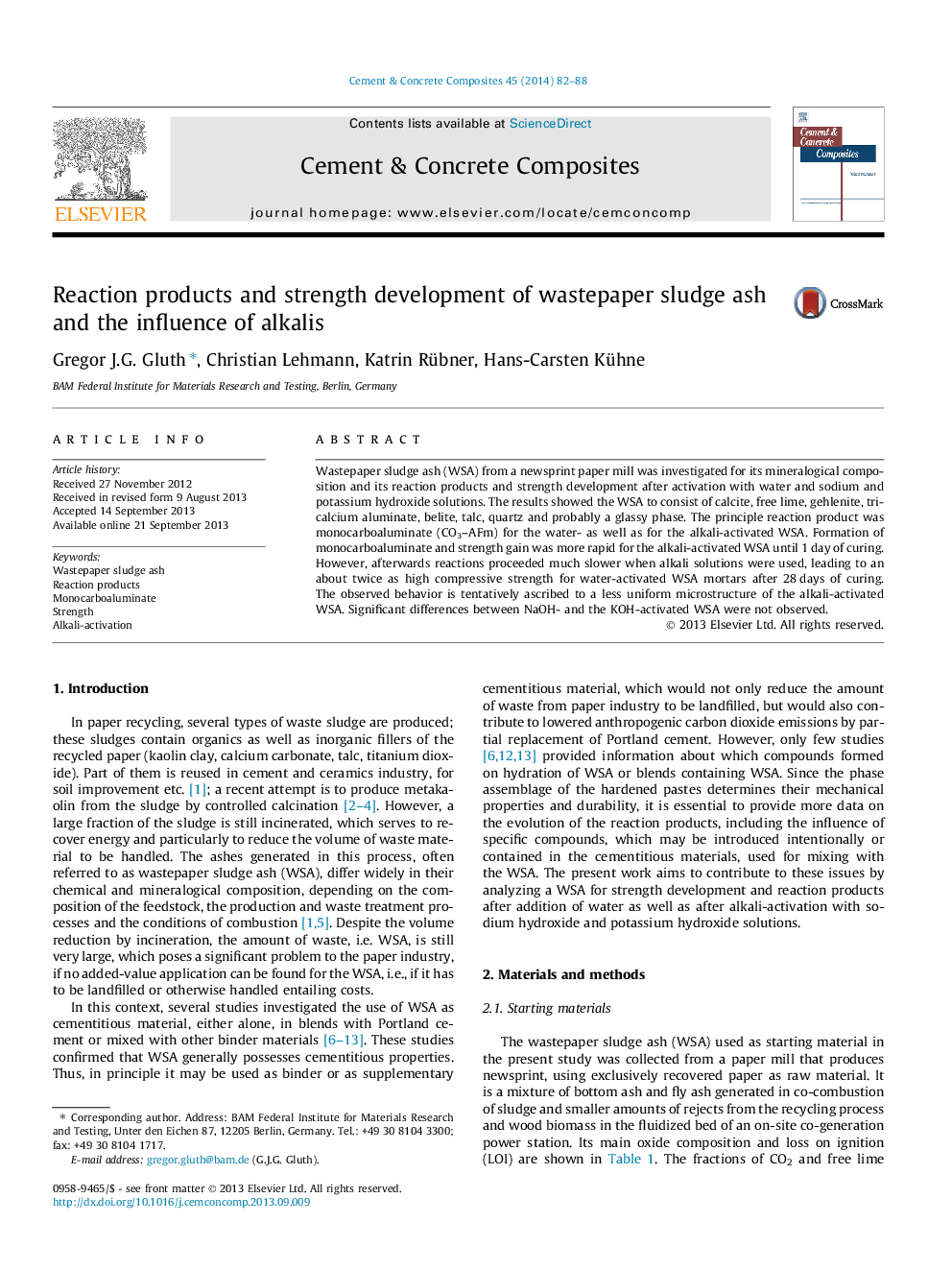| Article ID | Journal | Published Year | Pages | File Type |
|---|---|---|---|---|
| 1454708 | Cement and Concrete Composites | 2014 | 7 Pages |
Wastepaper sludge ash (WSA) from a newsprint paper mill was investigated for its mineralogical composition and its reaction products and strength development after activation with water and sodium and potassium hydroxide solutions. The results showed the WSA to consist of calcite, free lime, gehlenite, tricalcium aluminate, belite, talc, quartz and probably a glassy phase. The principle reaction product was monocarboaluminate (CO3–AFm) for the water- as well as for the alkali-activated WSA. Formation of monocarboaluminate and strength gain was more rapid for the alkali-activated WSA until 1 day of curing. However, afterwards reactions proceeded much slower when alkali solutions were used, leading to an about twice as high compressive strength for water-activated WSA mortars after 28 days of curing. The observed behavior is tentatively ascribed to a less uniform microstructure of the alkali-activated WSA. Significant differences between NaOH- and the KOH-activated WSA were not observed.
